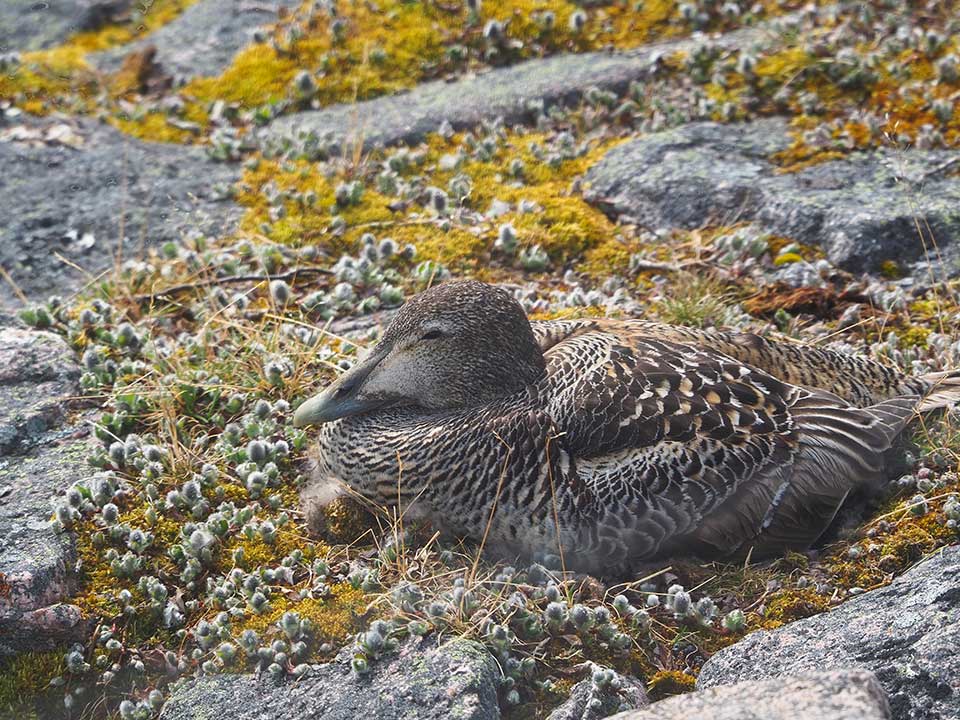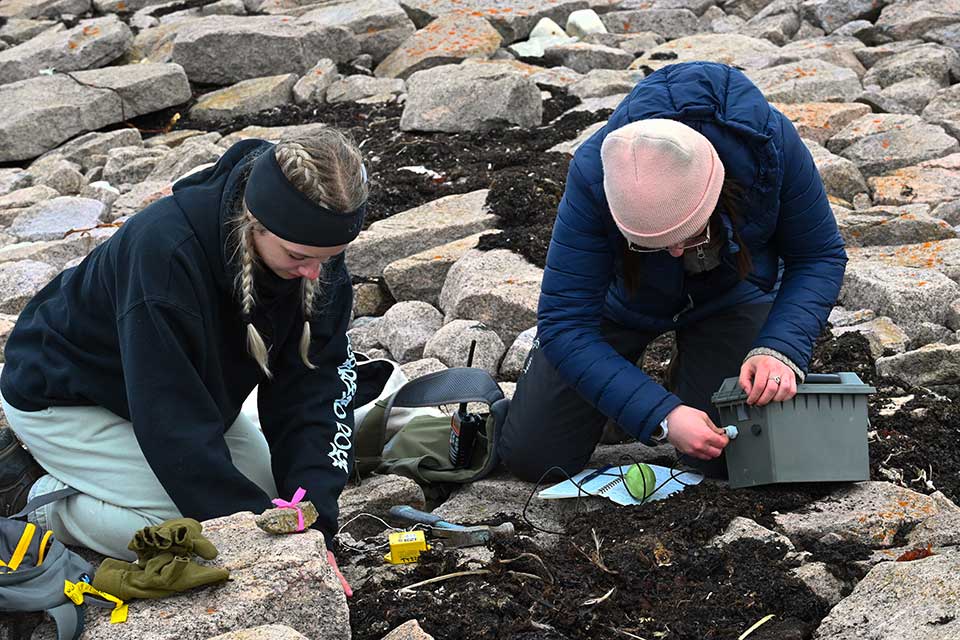
Emily Macdonald with a female common eider. Photo: Alysha Riquier
Emily is a Master’s student in Integrative Biology at the University of Windsor, Ontario co-supervised by Dr. Oliver Love and Dr. Christina Semeniuk. She completed her bachelor’s degree in Environmental Biology with a specialization in Wildlife Biology at McGill University in 2022. During her undergraduate degree, she explored conservation biology topics, developing a passion for seabird and duck conservation studies and conducted an honours project studying reproductive carry-over effects in thick-billed murres. This led to her pursuing her master’s in sea duck conservation research.
Her Master’s work focuses on the impacts of heat stress on incubating female common eiders from East Bay Island (Qikiqtakuluk), which lies within the East Bay (Qaqsauqtuuq) Migratory Bird Sanctuary in Nunavut, Canada. This island has recently been experiencing climate change-induced heat waves and unique weather events, which may impact eiders directly by causing them to overheat and working overtime to cool themselves.
While nesting, female common eiders fast for 24 to 26 days in order to protect and incubate their eggs. On East Bay, the nesting habitat is relatively open, with no types of nest covering to shield the birds from heat and the near 24-hours of sunlight the island experiences during the peak of summer. This prolonged exposure leaves them vulnerable to heat stress, which is exacerbated by their cold adaptations and extreme incubation strategy. This could ultimately have impacts on reproductive success and the health of females. Emily’s project aims to understand how heat stress and ultimately climate change impacts the physiology, behavior and fitness of female common eiders in East Bay to inform management strategies.

Female common eider on the nest. Photo: Emily Macdonald
Arctic-breeding common eiders have adaptations allowing them to effectively retain body heat in cold conditions. In fact, eiderdown is said to be the most insulative bird down in the world! However, in a warming environment these adaptations may become maladaptive, preventing the birds from being able to cool themselves efficiently, and reducing their heat tolerance. Additional research has also shown evidence of heart rate and nest movements increasing with ambient temps. In the extreme cold, common eiders will increase their heart rates to increase their metabolic rate and maintain their body temperature. Emily is looking to understand if there is a similar, or even heightened, response under high temperatures, where they may increase their heart rate to fuel evaporative cooling processes. Emily will also be exploring if high temperatures impact the female’s incubation constancy- as temperatures rise, it’s possible females will leave their nests more often to seek shade and water. Further, higher incubation temperatures and changes in incubation constancy could negatively impact egg survival.

Emily and colleagues setting up field equipment. Photo: Rebecca Jardine
Emily spent summer 2024 collecting data on heart rate and behavior of female common eiders at East Bay, using temperature probes to assess time spent on and off the nest during incubation, along with collecting humidity, dew point, and wind data. She is now analyzing data and drawing conclusions.
When asked about her favorite sea ducks, she shared that it has to be her study species, the common eider, but she does love sea ducks and sea birds in general, and hopes to keep studying them in the future. She would love to get more research experience, and do conservation work long term. We can’t wait to see the results of Emily’s research!
